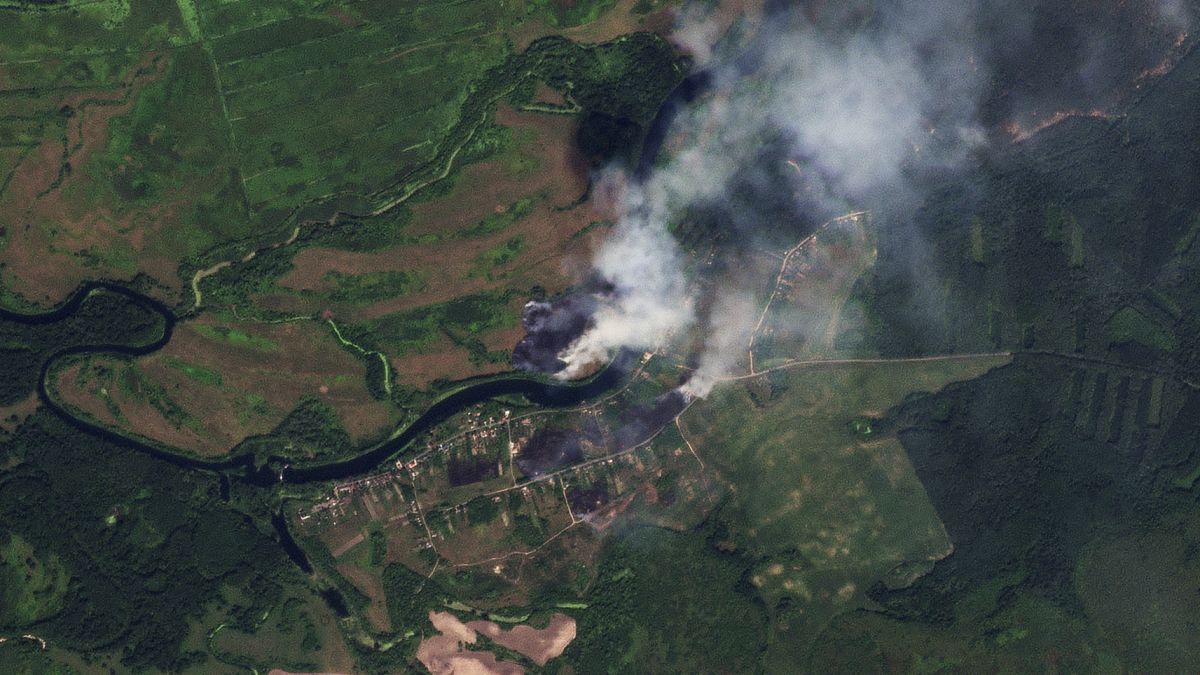The Russian Defence Ministry reported that 45 Ukrainian drones were destroyed overnight, with 11 targeting the Moscow region, 23 over the Bryansk region, and six over Belgorod. This marked the largest attack by Ukrainian drones since the start of fighting two and a half years ago. Moscow Mayor Sergey Sobyanin stated that all the drones were destroyed due to strong defences around the capital. Videos of drones being destroyed by air defence systems were shared on social media, including in Bryansk where Governor Alexander Bogomaz reported a “mass” attack on the region.
As Ukrainian forces continue to push into Russia’s western Kursk region, more evacuations have occurred. Local authorities in Kursk revealed that 122,000 citizens fled from nine border regions since the start of the incursion, with the Russian Emergency Ministry providing humanitarian aid to residents. Around 2,500 tonnes of aid have been delivered to the Kursk region, where Ukrainian forces made quick advancements in early August. The ISW noted that Ukrainian forces are targeting Russian pontoon bridges and engineering equipment in the region.
While Ukrainian forces have made gains in western regions, they are losing ground in the eastern industrial area of Donbas as Russian soldiers advance. The ongoing conflict has led to a significant displacement of residents in Kursk and increased tensions between the two countries. The continued incursion by Ukrainian forces has prompted responses from Russian authorities, with efforts to defend key regions and provide aid to affected residents. The situation remains complex and dynamic, with both sides making strategic moves to gain advantages on the battlefield.
The use of drones in attacks on Moscow and other regions highlights the evolving nature of warfare and the growing use of technology in modern conflicts. The destruction of 45 Ukrainian drones by Russian defences underscores the importance of advanced military capabilities in defending against aerial threats. The increasing sophistication of drone technology poses challenges for traditional defence systems, requiring constant adaptation and innovation to counter emerging threats. The successful defence of Moscow and other key regions against drone attacks demonstrates Russia’s readiness and ability to protect its territory from external threats.
The conflict between Russia and Ukraine continues to escalate, with both sides making strategic moves to gain advantages on the battlefield. The recent drone attacks on Moscow and other regions represent a significant escalation in the conflict, highlighting the ongoing tensions between the two countries. The use of drones in military operations underscores the evolving nature of warfare and the increasing role of technology in modern conflicts. As the conflict in Ukraine and the surrounding regions continues to unfold, both sides are likely to continue to adopt new tactics and technologies to gain the upper hand in the ongoing conflict.
The ongoing conflict in Ukraine and the surrounding regions has led to significant humanitarian challenges, with thousands of residents being displaced and in need of assistance. The provision of humanitarian aid to affected regions is crucial in addressing the immediate needs of vulnerable populations and ensuring their safety and well-being. The escalation of the conflict in recent weeks has heightened tensions in the region and raised concerns about the potential for further violence and instability. As the situation continues to evolve, it is essential for all parties involved to prioritize the protection of civilians and work towards a peaceful resolution to the conflict.











